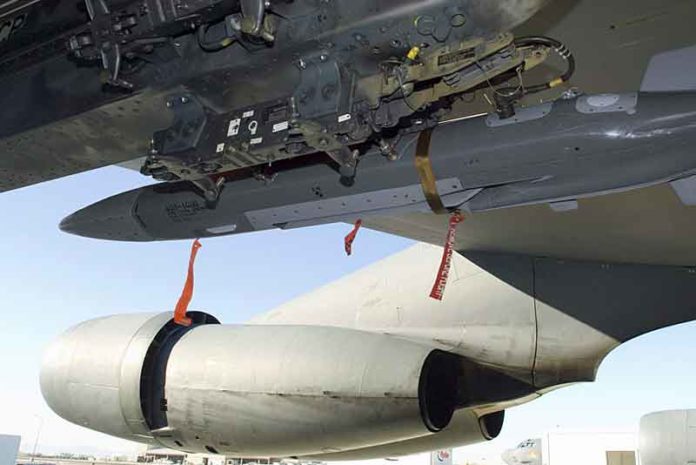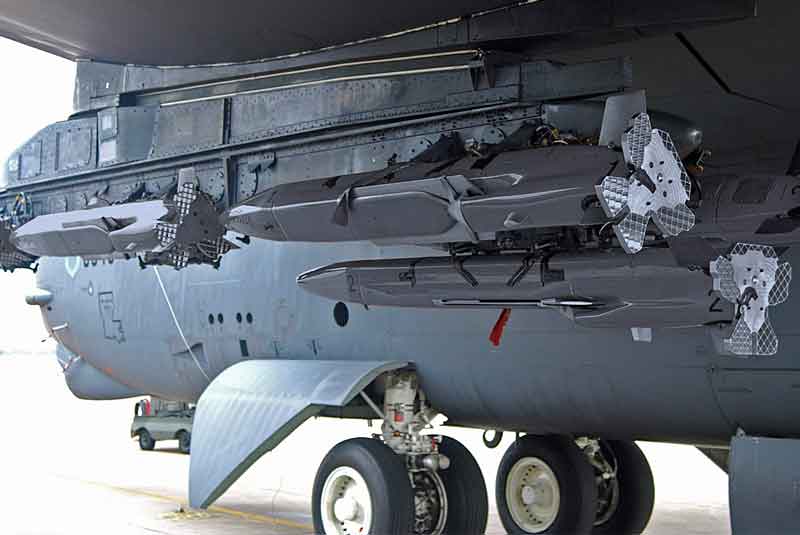
Raytheon Company is in receipt of a $96.1 million contract from the U.S. Air Force (USAF) to produce 250 Miniature Air-Launched Decoys, or MALD® missiles.
The USAF award occurred just prior to Raytheon marking its 2,000th MALD system delivery, and 10th year of on-time customer deliveries.
(See how MALD® (Miniature Air Launched Decoy) enhances penetrating airspace for combat aircraft in an Anti-Access Aerial Denial scenario. Courtesy of Raytheon and YouTube. Posted on Feb 6, 2013.)
The MALD system is an air-launched missile with both decoy and jamming capabilities that can electronically stimulate and then neutralize enemy air defense systems.
The MALD decoy is a flexible and modular system that has the potential to keep aviators and aircraft out of harm’s way.

It’s an expendable air-launched flight vehicle that looks like a U.S. or allied aircraft to enemy integrated air defense systems (IADS).
The U.S. and its allies can confuse and deceive enemy IADS by sending a formation of MALD decoys into hostile airspace.
Weighing less than 300 pounds, the weapon has a range of approximately 500 nautical miles (575 statute miles).
After it is launched from its host aircraft, the MALD decoy flies a preprogrammed mission.
In addition to protecting valuable aircraft, the weapon offers counter-air operations to neutralize air defense systems that pose a threat to U.S. and allied pilots.
(Learn More. The Miniature Air Launched Decoy (MALD ®) is a low-cost, air-launched programmable craft that accurately duplicates the combat flight profiles and signatures of U.S. and allied aircraft. Courtesy of Raytheon and YouTube.)
MALD-J DECOY
The MALD-J decoy is the jammer variant of the basic decoy, and the first ever stand-in jammer to enter production.
The unmanned MALD-J decoy navigates and operates much closer to the victim radar than conventional electronic warfare when jamming the electronics, allowing aviators and aircraft to stay out of harm’s way.
And, it is able to loiter in the target area for an extended time period – plenty of time to complete the mission.
The weapon can operate alone or in pairs, but is designed to work with and leverage other electronic warfare platforms.

Raytheon produces the MALD-J jamming variant, and is also developing a system for the U.S. Navy.
“MALD gives fighter pilots control of the skies, so they can stay out of harm’s way,” said Mike Jarrett, Raytheon Air Warfare Systems vice president.
“We’re at the leading edge of electronic warfare, to defeat the most advanced air defense systems.”
The Air Force has completed aircraft integration and the Navy is planning to integrate the missile onto their fleet aircraft.
(The U.S. Marine Corps and U.S. Air Force successfully completed the first flight demonstration of a Miniature Air Launched Decoy Jammer, or MALD-J, in 2014 with a radio data link at the U.S. Marine Corps Air Station in Yuma, Arizona. Courtesy of TomoNews US and YouTube. Posted on Dec 12, 2014.)

















